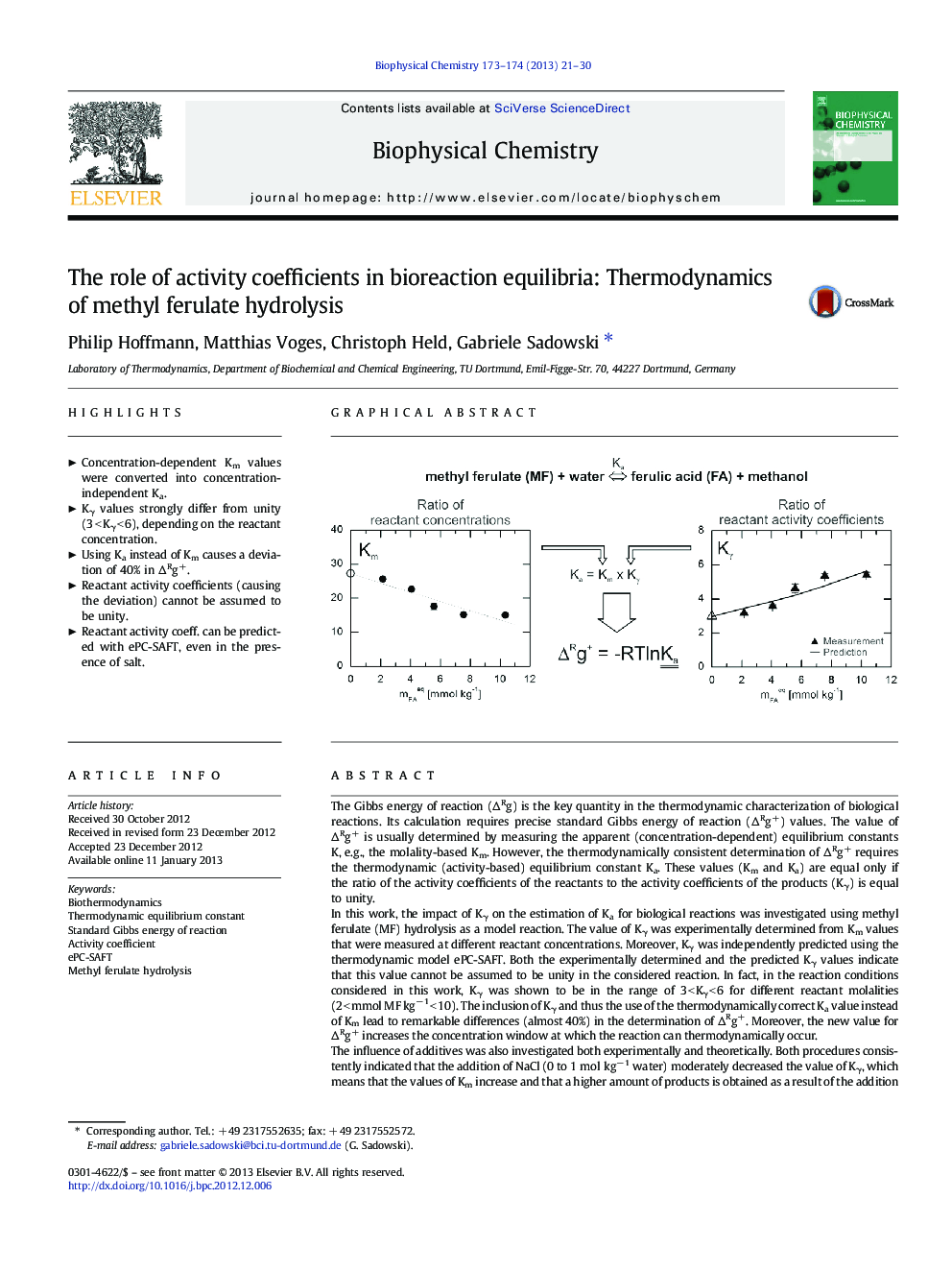| Article ID | Journal | Published Year | Pages | File Type |
|---|---|---|---|---|
| 5371131 | Biophysical Chemistry | 2013 | 10 Pages |
The Gibbs energy of reaction (ÎRg) is the key quantity in the thermodynamic characterization of biological reactions. Its calculation requires precise standard Gibbs energy of reaction (ÎRg+) values. The value of ÎRg+ is usually determined by measuring the apparent (concentration-dependent) equilibrium constants K, e.g., the molality-based Km. However, the thermodynamically consistent determination of ÎRg+ requires the thermodynamic (activity-based) equilibrium constant Ka. These values (Km and Ka) are equal only if the ratio of the activity coefficients of the reactants to the activity coefficients of the products (Kγ) is equal to unity.In this work, the impact of Kγ on the estimation of Ka for biological reactions was investigated using methyl ferulate (MF) hydrolysis as a model reaction. The value of Kγ was experimentally determined from Km values that were measured at different reactant concentrations. Moreover, Kγ was independently predicted using the thermodynamic model ePC-SAFT. Both the experimentally determined and the predicted Kγ values indicate that this value cannot be assumed to be unity in the considered reaction. In fact, in the reaction conditions considered in this work, Kγ was shown to be in the range of 3 < Kγ < 6 for different reactant molalities (2 < mmol MF kgâ 1 < 10). The inclusion of Kγ and thus the use of the thermodynamically correct Ka value instead of Km lead to remarkable differences (almost 40%) in the determination of ÎRg+. Moreover, the new value for ÎRg+ increases the concentration window at which the reaction can thermodynamically occur.The influence of additives was also investigated both experimentally and theoretically. Both procedures consistently indicated that the addition of NaCl (0 to 1 mol kgâ 1 water) moderately decreased the value of Kγ, which means that the values of Km increase and that a higher amount of products is obtained as a result of the addition of salt. Additionally, Km was found to strongly depend on pH. A ten-fold increase in the Km values was observed in the pH range of 6 to 7; this increase corresponds to a change of more than 100% in the value of ÎRg+.
Graphical abstractDownload full-size imageHighlights⺠Concentration-dependent Km values were converted into concentration-independent Ka. ⺠Kγ values strongly differ from unity (3 < Kγ < 6), depending on the reactant concentration. ⺠Using Ka instead of Km causes a deviation of 40% in ÎRg+. ⺠Reactant activity coefficients (causing the deviation) cannot be assumed to be unity. ⺠Reactant activity coeff. can be predicted with ePC-SAFT, even in the presence of salt.
